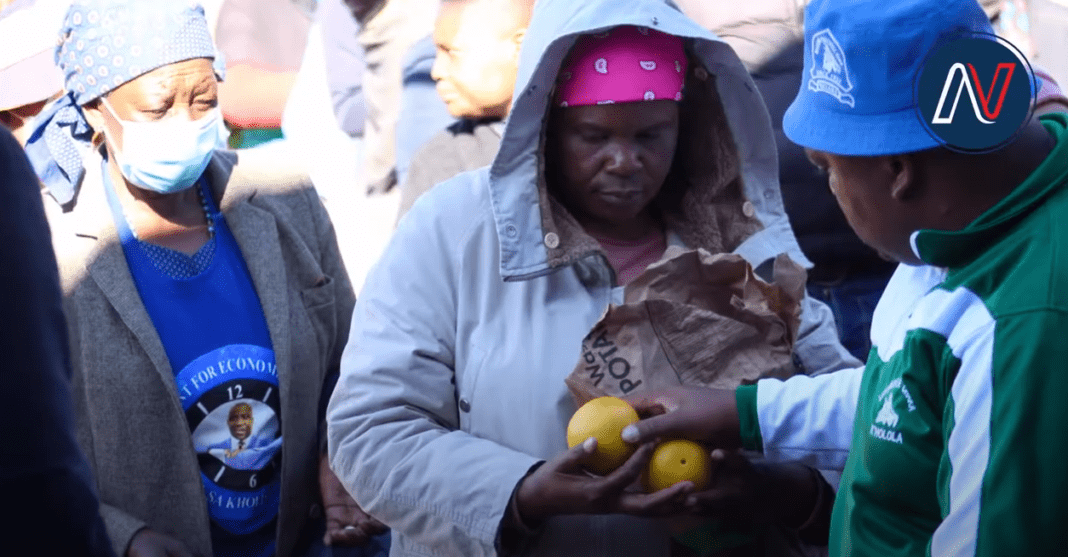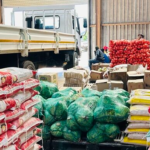… The situation is expected to exacerbate
Kananelo Boloetse
In the period from July to September 2023, an estimated 245,000 individuals residing in the country’s rural areas are facing severe levels of acute food insecurity.
This concerning revelation stems from a recent Integrated Food Security Phase Classification (IPC) analysis, which also underscored the critical need for immediate action to bridge food gaps, safeguard livelihoods, and prevent acute malnutrition.
The analysis, published on Tuesday this week, identified several key factors driving this food insecurity, including an excess of rainfall in December 2022, price shocks, and destructive hailstorms
“Heavy rains destroyed crops resulting in waterlogging. Interrupted weeding activities also curtailed production and reduced income,†stated the report.
It further noted: “Food prices are higher compared to the previous year thereby undermining household purchasing power.â€
Hailstorms proved to be a devastating blow to crop production in several regions, significantly impacting agricultural output.
The report underlined that limited food access is a major constraint due to elevated food prices.
In contrast to 2022, a 12.5kg bag of maize meal now exceeds M100 compared to M80 last year.
Food inflation stood at 9.6 percent in May 2023, compared to 7.8 percent during the same period in 2022, with an overall inflation rate of 6.9 percent, compared to 7.8 percent in 2022.
“The above factors will negatively impact the purchasing power of the most vulnerable households,†cautioned the report.
It further indicated that less affluent households face greater challenges in accessing food, money, and labour opportunities compared to their wealthier counterparts.
With the current reduction in production, it revealed that some families are being compelled to withdraw their children from school to cope with food shortages.
Beyond soaring food prices, the report also highlighted the loss of other primary livelihood sources, including traditional beer sales, as well as the lasting repercussions of COVID-19.
The migrants who have not returned to South Africa where they were working before the pandemic have left certain households in a disadvantaged position.
The situation is expected to exacerbate, with the analysis projecting that from October 2023 to March 2024, approximately 325,000 people, constituting 22 percent of the rural population, may confront food insecurity, necessitating humanitarian assistance to bridge food gaps, safeguard and rejuvenate livelihoods, and prevent acute malnutrition.
During this period, the affected population is likely to experience heightened acute food insecurity, slightly surpassing levels observed at the same time last year.
The analysis advocates for “immediate action to preserve lives, narrow food consumption gaps, and safeguard the livelihoods of vulnerable individualsâ€.
It also underscores the necessity of “providing agricultural inputs to farming households lacking accessâ€.
It encouraged the government to persist in its initiative to locally procure grains and beans from domestic producers, fostering market opportunities for surplus-producing farmers.
Additionally, the report suggested strategies like livestock vaccination campaigns and fodder production interventions to shield livelihood assets and production systems.
Resilience-building programs, including climate-smart agriculture initiatives, were also recommended.
For the IPC, acute food insecurity is defined as any manifestation of food insecurity found in a specified area at a specific point in time of severity that threatens lives, livelihoods, or both, regardless of the causes, context, or duration.
Summary
- In the period from July to September 2023, an estimated 245,000 individuals residing in the country’s rural areas are facing severe levels of acute food insecurity.
- The situation is expected to exacerbate, with the analysis projecting that from October 2023 to March 2024, approximately 325,000 people, constituting 22 percent of the rural population, may confront food insecurity, necessitating humanitarian assistance to bridge food gaps, safeguard and rejuvenate livelihoods, and prevent acute malnutrition.
- For the IPC, acute food insecurity is defined as any manifestation of food insecurity found in a specified area at a specific point in time of severity that threatens lives, livelihoods, or both, regardless of the causes, context, or duration.

Your Trusted Source for News and Insights in Lesotho!
At Newsday Media, we are passionate about delivering accurate, timely, and engaging news and multimedia content to our diverse audience. Founded with the vision of revolutionizing the media landscape in Lesotho, we have grown into a leading hybrid media company that blends traditional journalism with innovative digital platforms.








